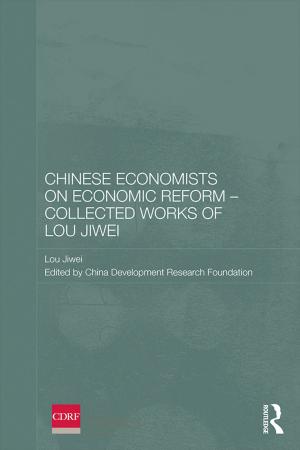Milk
Its Remarkable Contribution to Human Health and Well-being
Nonfiction, Health & Well Being, Medical, Patient Care, Nutrition, Social & Cultural Studies, Social Science, Sociology| Author: | Stuart Patton | ISBN: | 9781351505352 |
| Publisher: | Taylor and Francis | Publication: | July 28, 2017 |
| Imprint: | Routledge | Language: | English |
| Author: | Stuart Patton |
| ISBN: | 9781351505352 |
| Publisher: | Taylor and Francis |
| Publication: | July 28, 2017 |
| Imprint: | Routledge |
| Language: | English |
Milk is the one food that sustains life and promotes growth in all newborn mammals, including the human infant. By its very nature, milk is nutritious. Despite this, it has received surprisingly little attention from those interested in the cultural impact of food. In this fascinating volume, Stuart Patton convincingly argues that milk has become of such importance and has so many health and cultural implications that everyone should have a basic understanding of it. This book provides this much-needed introduction. Patton's approach to his subject is comprehensive. He begins with how milk is made in the lactating cell, and proceeds to the basics of cheese making and ice cream manufacture. He also gives extensive consideration to human milk, including breasts, lactation, and infant feeding. Pro and con arguments about the healthfulness of cows' milk are discussed at length and with documentation. Patton explores the growing gap between the public's impressions of milk, and known facts about milk and dairy foods. He argues that the layperson's understanding of milk has deteriorated as a result of propaganda from activists anxious to destroy milk's favorable image, misinformation in the media, and scare implications from medical research hypotheses.
Milk is the one food that sustains life and promotes growth in all newborn mammals, including the human infant. By its very nature, milk is nutritious. Despite this, it has received surprisingly little attention from those interested in the cultural impact of food. In this fascinating volume, Stuart Patton convincingly argues that milk has become of such importance and has so many health and cultural implications that everyone should have a basic understanding of it. This book provides this much-needed introduction. Patton's approach to his subject is comprehensive. He begins with how milk is made in the lactating cell, and proceeds to the basics of cheese making and ice cream manufacture. He also gives extensive consideration to human milk, including breasts, lactation, and infant feeding. Pro and con arguments about the healthfulness of cows' milk are discussed at length and with documentation. Patton explores the growing gap between the public's impressions of milk, and known facts about milk and dairy foods. He argues that the layperson's understanding of milk has deteriorated as a result of propaganda from activists anxious to destroy milk's favorable image, misinformation in the media, and scare implications from medical research hypotheses.















